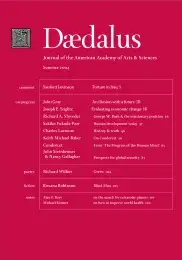Prospects for global security
Throughout history, assuring the security of citizens has been an overriding priority of most governments, and large-scale forms of deliberate aggression have been their dominant concern.1 In response to that concern, modern states have made large investments in military force, and the resulting balance of national capability has generally been considered the principal determinant of international order.
Over the past decade, however, this traditional conception of security has been continuously eroded by circumstances that do not readily fit the assumptions. Policymakers still worry about belligerent enemies, but their number has diminished in recent years, and virtually none of them seems capable of the classic forms of massive aggression. The extensive violence that does persist is episodic, small in scale, and widely dispersed. In the United States in the aftermath of the September 11 events, the phenomenon of terrorism has been declared a global enemy, but the damage directly caused by terrorist actions has so far been only a small fraction of that resulting from civil conflicts and ordinary crime. The capacities and characteristics of the largely anonymous perpetrators seem to be less relevant than the underlying causes. At the lead- . . .
